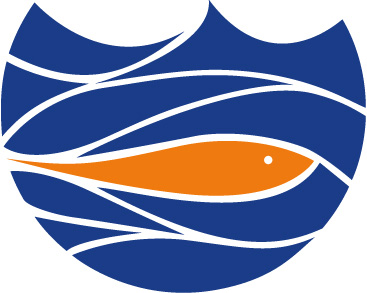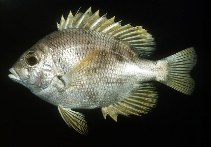http://www.fishbase.org/Summary/speciesSummary.php?genusname=Wattsia&speciesname=mossambica ---> http://192.134.151.83/Summary/speciesSummary.php?genusname=Wattsia&speciesname=mossambica
http://192.134.151.83/Summary/speciesSummary.php?genusname=Wattsia&speciesname=mossambica ---> https://fishbase.mnhn.fr/Summary/speciesSummary.php?genusname=Wattsia&speciesname=mossambica
https://fishbase.mnhn.fr/Summary/speciesSummary.php?genusname=Wattsia&speciesname=mossambica ---> https://fishbase.mnhn.fr/summary/Wattsia-mossambica.html
Wattsia mossambica, Mozambique large-eye bream : fisheries

You can
sponsor
this page
Common name (e.g. trout)
Genus + Species (e.g. Gadus morhua)
-

-
About this page
-
Languages
-
User feedbacks
-
Citation
-
Uploads
-
Related species
-


 Mozambique large-eye bream
Add your observation in
Fish Watcher
Upload your
photos
and
videos
Mozambique large-eye bream
Add your observation in
Fish Watcher
Upload your
photos
and
videos
Pictures
|
Videos |
Google image
 Wattsia mossambica
Wattsia mossambica
Picture by
Randall, J.E.
Teleostei (teleosts) >
Eupercaria/misc
(Various families in series Eupercaria) >
Lethrinidae
(Emperors or scavengers) > Monotaxinae
Etymology: More on author:
Smith
.
Environment: milieu / climate zone / depth range / distribution range
Ecology
Marine; reef-associated; non-migratory; depth range 100 - 200 m (Ref.
86942
). Deep-water; 35°N - 34°S
Indo-West Pacific: tropical, known only from a few scattered localities.
Length at first maturity / Size / Weight / Age
Maturity: L
m
31.0
range ? - ? cm
Max length : 55.0 cm TL male/unsexed; (Ref.
2295
); common length : 35.0 cm TL male/unsexed; (Ref.
2295
)
Dorsal
spines
(total): 10;
Dorsal
soft rays
(total): 10;
Anal
spines
: 3;
Anal
soft rays
: 10. The inner surface of the pectoral fin axil without scales. Overall color is silvery-gray with yellowish suffusion; scale margins are narrowly brownish. Indistinct dark blotches or bars are sometimes apparent on the body. The lips are whitish to yellow. The fins are yellow, faint brown spotting may be present on soft dorsal, anal, and caudal fins. A narrow blackish bar runs across the base of the pectoral fin.
Inhabits the outer edge of the continental shelf. Feeds on bottom-living invertebrates and small fishes. Caught mainly with bottom longlines and bottom trawls (Ref.
9775
).
Life cycle and mating behavior
Maturity
|
Reproduction
|
Spawning
|
Eggs
|
Fecundity
|
Larvae
Carpenter, K.E. and G.R. Allen
, 1989. FAO Species Catalogue. Vol. 9. Emperor fishes and large-eye breams of the world (family Lethrinidae). An annotated and illustrated catalogue of lethrinid species known to date. FAO Fish. Synop. 125(9):118 p. Rome: FAO. (Ref.
2295
)
IUCN Red List Status (Ref.
130435
)
Least Concern (LC)
; Date assessed:
09 March 2015
CITES
Not Evaluated
Not Evaluated
Threat to humans
Harmless
Human uses
Fisheries: minor commercial
FAO - Publication:
search
|
FishSource
|
Sea Around Us
More information
Countries
FAO areas
Ecosystems
Occurrences
Introductions
Stocks
Ecology
Diet
Food items
Food consumption
Ration
Common names
Synonyms
Metabolism
Predators
Ecotoxicology
Reproduction
Maturity
Spawning
Spawning aggregation
Fecundity
Eggs
Egg development
Age/Size
Growth
Length-weight
Length-length
Length-frequencies
Morphometrics
Morphology
Larvae
Larval dynamics
Recruitment
Abundance
BRUVS
References
Aquaculture
Aquaculture profile
Strains
Genetics
Electrophoreses
Heritability
Diseases
Processing
Nutrients
Mass conversion
Collaborators
Pictures
Stamps, Coins Misc.
Sounds
Ciguatera
Speed
Swim. type
Gill area
Otoliths
Brains
Vision
Tools
E-book
|
Field guide
|
Identification keys
|
Length-frequency wizard
|
Life-history tool
|
Point map
|
Classification Tree
|
Catch-MSY
|
Special reports
Check for Aquarium maintenance
|
Check for Species Fact Sheets
|
Check for Aquaculture Fact Sheets
Download XML
Summary page
|
Point data
|
Common names
|
Photos
Internet sources
AFORO (otoliths) |
Aquatic Commons
|
BHL
|
Cloffa
|
BOLDSystems
|
Websites from users
|
Check FishWatcher
|
CISTI
|
Catalog of Fishes
:
genus
,
species
|
DiscoverLife
|
ECOTOX
| FAO - Publication:
search
|
Faunafri
| Fishipedia |
Fishtrace
| GenBank:
genome
,
nucleotide
|
GloBI
|
Google Books
|
Google Scholar
|
Google
| IGFA World Record |
MitoFish
|
National databases
|
Otolith Atlas of Taiwan Fishes
|
PubMed
|
Reef Life Survey
|
Socotra Atlas
|
Tree of Life
| Wikipedia:
Go
,
Search
| World Records Freshwater Fishing |
Zoological Record
Estimates based on models
Preferred temperature (Ref.
123201
): 14.4 - 24.3, mean 19.9 °C (based on 186 cells).
Phylogenetic diversity index (Ref.
82804
): PD
50
= 1.0000 [Uniqueness, from 0.5 = low to 2.0 = high].
Bayesian length-weight: a=0.01862 (0.00665 - 0.05211), b=2.96 (2.72 - 3.20), in cm total length, based on LWR estimates for this (Sub)family-body shape (Ref.
93245
).
Trophic level (Ref.
69278
): 3.7 ±0.52 se; based on food items.
Generation time: 3.3 ( na - na) years. Estimated as median ln(3)/K based on 2
growth studies.
Resilience (Ref.
120179
): Medium, minimum population doubling time 1.4 - 4.4 years (Preliminary K or Fecundity.).
Fishing Vulnerability (Ref.
59153
): Low to moderate vulnerability (28 of 100).
Price category (Ref.
80766
):
Very high
.
Nutrients (Ref.
124155
): Calcium = 7.76 [3.70, 20.47] mg/100g; Iron = 0.227 [0.089, 0.528] mg/100g; Protein = 18.9 [16.9, 21.2] %; Omega3 = 0.157 [0.067, 0.348] g/100g; Selenium = 11.4 [3.9, 31.1] μg/100g; VitaminA = 14.7 [2.0, 110.9] μg/100g; Zinc = 0.323 [0.185, 0.529] mg/100g (wet weight);
Back to Search
Random Species
Back to Top
Accessed through:
Not available
FishBase mirror site :
localhost
Page last modified by :
mrius-barile
- 20 July 2016
Fatal error
: Uncaught ArgumentCountError: Too few arguments to function checkEcotox(), 1 passed in /var/www/html/summary/speciessummary.php on line 2304 and exactly 3 expected in /var/www/html/includes/speciessummary.lib.php:2579 Stack trace: #0 /var/www/html/summary/speciessummary.php(2304): checkEcotox() #1 {main} thrown in
/var/www/html/includes/speciessummary.lib.php
on line
2579
|